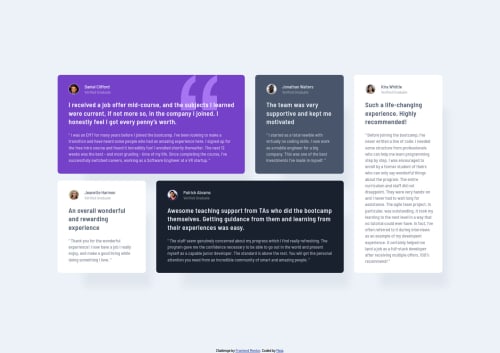Submitted about 3 years agoA solution to the Testimonials grid section challenge
Testimonials section with CSS Grid
@maiaflow

Solution retrospective
I'm proud of myself for doing mobile first and for figuring out grid for the first time, but by the end I realized I probably should have relied more on things like min-height, and less on things like padding with pixels to make things "pixel perfect" to the screenshot. Even though I know I shouldn't even be trying to do that XD Curious also about how I did with my use of semantic HTML elements!
Code
Loading...
Please log in to post a comment
Log in with GitHubCommunity feedback
No feedback yet. Be the first to give feedback on maia's solution.
Join our Discord community
Join thousands of Frontend Mentor community members taking the challenges, sharing resources, helping each other, and chatting about all things front-end!
Join our Discord